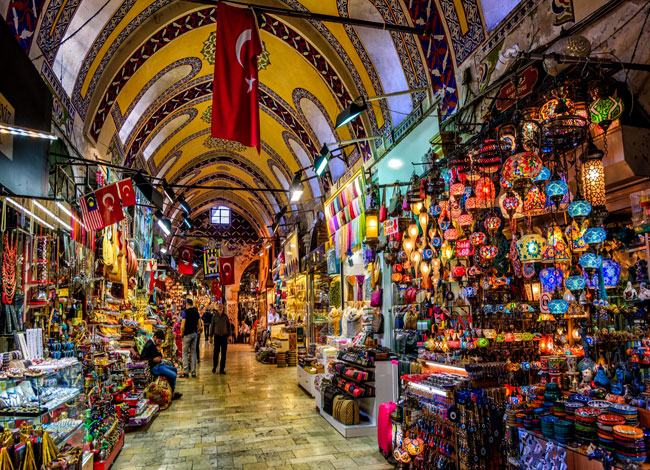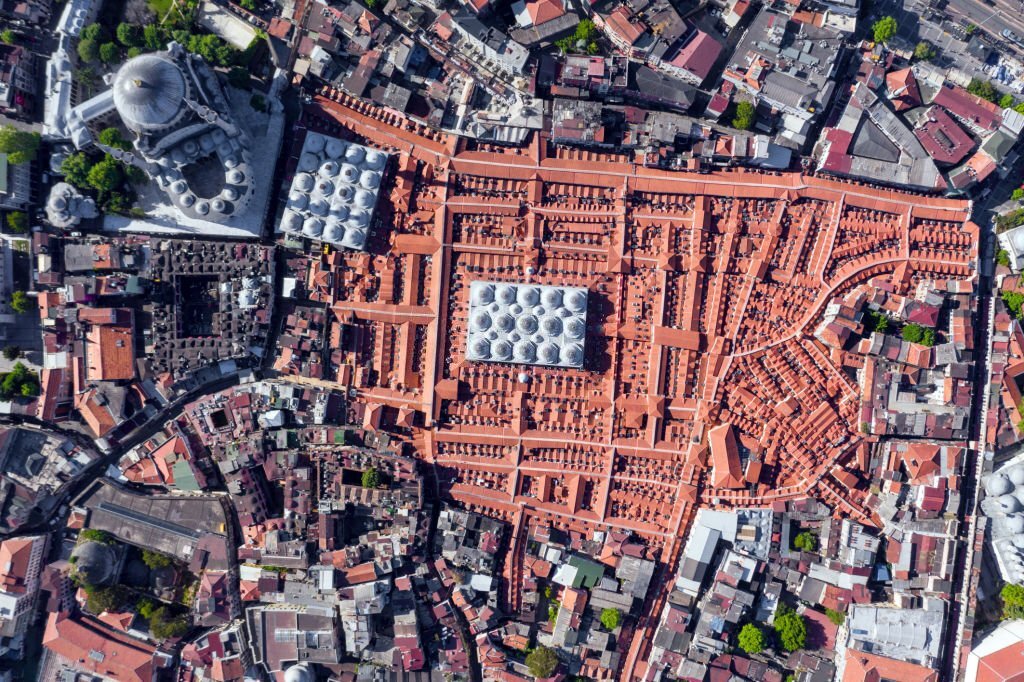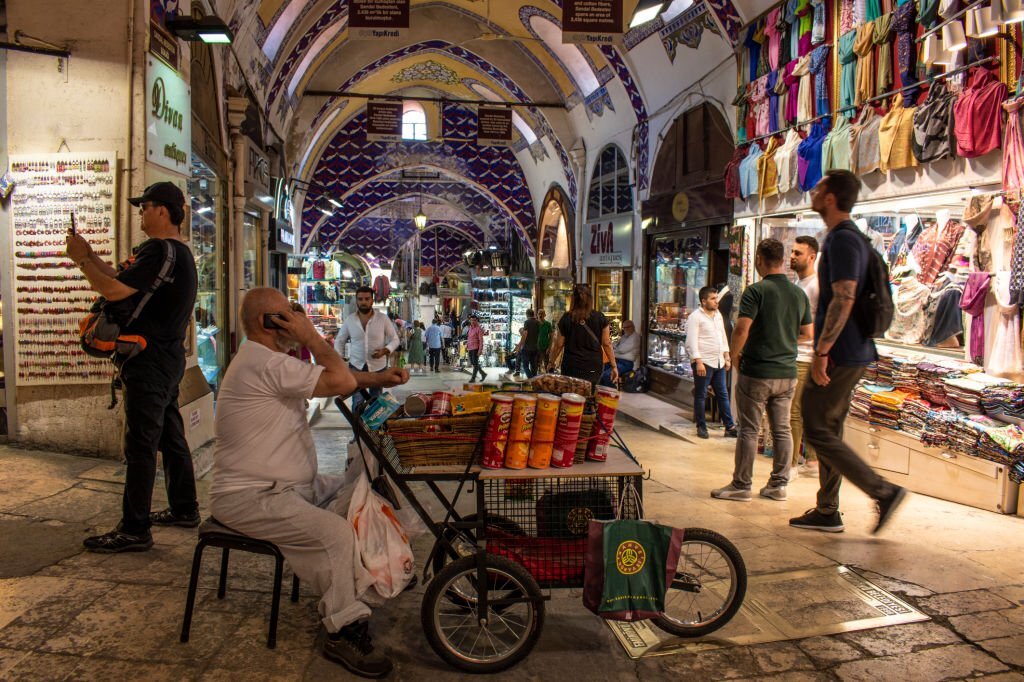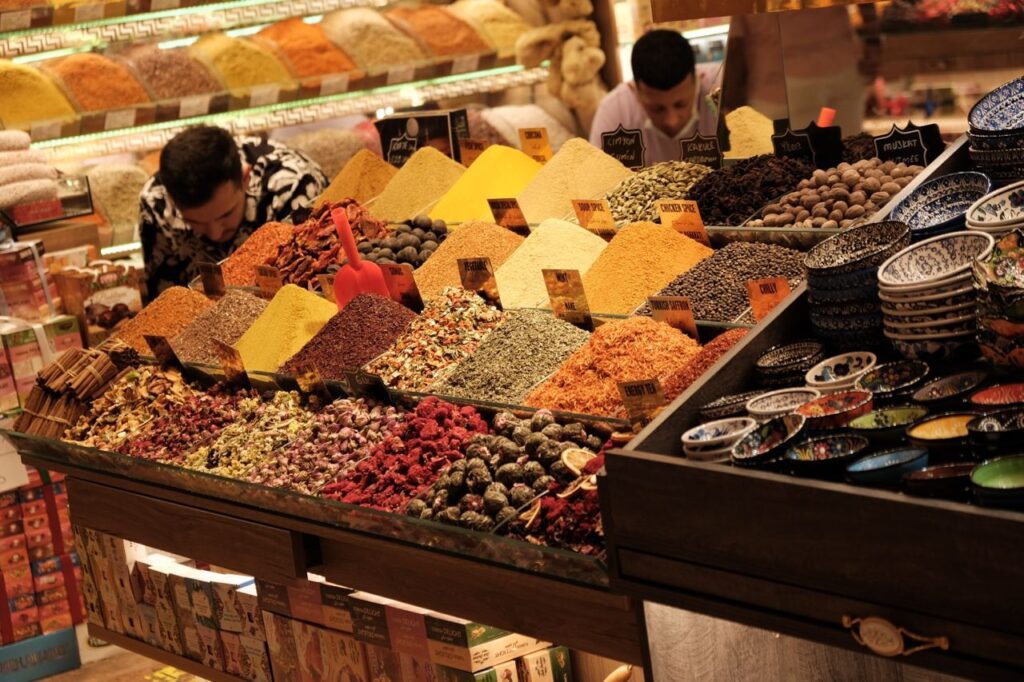Pay Once and Have Free Attractions Entry for 2, 3, 5 or 7 days
As you set foot in the labyrinthine corridors of Istanbul’s iconic Grand Bazaar, you embark on a fascinating journey through centuries of history, culture, and commerce. This bustling hub of ancient trade routes offers a unique window into the lives of generations of merchants, craftsmen, and travelers who have shaped the city’s rich heritage. Join us as we delve into the captivating tale of the Grand Bazaar, exploring its architectural marvels, uncovering its hidden secrets, and celebrating its enduring legacy as a symbol of Istanbul’s vibrant spirit.
Historical Background of Istanbul Grand Bazaar
The Grand Bazaar’s story begins in the 15th century when the Ottoman Empire, under the reign of Sultan Mehmet II, conquered Constantinople and transformed it into the capital of their growing empire. As the city rapidly evolved into a thriving metropolis, the need for a centralized marketplace became increasingly evident.
In 1461, the Grand Bazaar was born as a humble structure, intended to serve as a commercial hub for local artisans and merchants. Over time, its influence expanded, drawing traders from across the empire and beyond. From the fragrant spice routes of the East to the opulent silk roads of the West, the Grand Bazaar became a melting pot of cultures, goods, and ideas.
Interior Design of the Grand Bazaar
The sprawling complex of the Grand Bazaar boasts a stunning display of Ottoman architecture, characterized by its intricate domes, vaulted ceilings, and ornate carvings. The bazaar’s design reflects a harmonious blend of form and function, with its maze-like layout providing ample space for thousands of shops, while also fostering a sense of community among the merchants who called it home.

Grand Bazaar’s Construction
As the Grand Bazaar’s influence grew, so too did its physical footprint. Over the centuries, successive sultans commissioned expansions and renovations to accommodate the burgeoning market. Today, the bazaar covers a staggering 61 streets, encompassing over 4,000 shops and countless workshops, restaurants, and teahouses.

The Grand Bazaar Today
In the modern era, the Grand Bazaar remains a thriving hub of commerce and culture, attracting millions of visitors each year. Despite the passage of time, the spirit of the bazaar endures, as merchants continue to barter their wares, artisans hone their crafts, and tourists seek out the perfect souvenir to commemorate their Istanbul adventure.
Read how to haggling in Istanbul >>
Don’t Miss The Best Tours and Cruises in Istanbul
Free Guided Tour with Istanbul E-Pass
To get the most out of your Grand Bazaar experience, consider joining a guided tour, such as the Istanbul E-Pass. These expert guides can help you navigate the maze-like corridors, offer insights into the bazaar’s history, and provide valuable tips for bargaining with merchants.
Gates of the Grand Bazaar
The Grand Bazaar features 22 gates, each with its own unique history and character. Some notable examples include:
Nuruosmaniye Gate
A stunning example of Ottoman Baroque architecture, this gate leads to the luxurious Nuruosmaniye Mosque and is surrounded by high-end jewelry shops.
Beyazıt Gate
Named after the nearby Beyazıt Mosque, this gate opens onto a bustling square teeming with bookstores, cafés, and antique shops.
Mahmutpaşa Gate
This gate is the entrance to the Mahmutpaşa Bazaar, a lively market area where visitors can find a myriad of textiles, clothing, and accessories.

Different Streets and Their History
The Grand Bazaar’s myriad streets, each with its own unique character and history, contribute to its enchanting atmosphere. Some notable streets include:
Kalpakçılar Street
Renowned for its dazzling array of gold and silver jewelry, this street has been the heart of the bazaar’s jewelry trade for centuries. See the location…
Sahaflar Street
A haven for bibliophiles, this street is home to Istanbul’s oldest book bazaar, where visitors can peruserare manuscripts, antique tomes, and contemporary works in a multitude of languages. See the location…
İç Bedesten Street
This historic street, once the epicenter of the bazaar’s silk trade, now features a diverse array of shops selling antiques, carpets, textiles, and precious stones. See the location…
Kürkçüler Street
As the name suggests, Kürkçüler Street has long been associated with the fur trade, and today it remains a popular destination for those seeking luxurious fur garments and accessories. See the location…
Not sure what to buy on Grand Bazaar? Read our article!
Key Spots and Places in Grand Bazaar
The Grand Bazaar’s vast expanse contains a treasure trove of hidden gems and intriguing locales. Some key spots worth exploring include:
- İç Bedesten: At the heart of the Grand Bazaar lies the İç Bedesten, an ancient structure housing a collection of the market’s most exclusive wares. Here, visitors can discover precious jewels, rare antiques, and exquisite textiles in a stunning setting that evokes the opulence of the Ottoman Empire.
- Cevahir Bedesten: This domed hall, adjacent to the İç Bedesten, was once the epicenter of the silk trade. Today, it houses a diverse array of shops selling everything from handmade carpets to intricate gold jewelry.
- Zincirli Han: A historic caravanserai turned commercial complex, Zincirli Han is home to a community of skilled artisans who create exquisite handmade jewelry, often using traditional techniques passed down through generations.

Interesting Facts About the Grand Turkish Bazaar
- The Grand Bazaar is often considered one of the world’s first shopping malls, with its labyrinthine layout, diverse array of shops, and unique atmosphere.
- At its peak during the Ottoman Empire, the bazaar employed an estimated 30,000 people, making it one of the largest employers of its time.
- The bazaar has survived numerous fires, earthquakes, and political upheavals throughout its long history, a testament to the resilience of the market and the people who inhabit it.
How to Get to the Grand Bazaar?
The Grand Bazaar is easily accessible via public transportation. The nearest tram stop is Beyazıt-Kapalıçarşı, which is serviced by the T1 Kabataş-Bağcılar tram line. Alternatively, visitors can take the M2 metro line to Vezneciler station, which is a short walk from the bazaar.
Stress-Free Transport Cards for Your Istanbul Adventure
We recommend to book transport card, pre-charged with 5 or 10 rides, for a seamless travel experience in Istanbul. Available for pickup at Havalines Kiosks at the airport or delivered to your hotel, this card allows you to effortlessly navigate the city and focus on soaking up the rich history and culture that Istanbul offers.
Insider Tips for Grand Bazaar
- The bazaar can be quite crowded, especially during peak tourist season. To avoid the throngs of visitors, try exploring the market early in the morning or in the late afternoon.
- Be prepared to haggle – bargaining is an integral part of the shopping experience at the Grand Bazaar, and many merchants expect customers to negotiate prices.
Working Days of the Grand Bazaar
The Grand Bazaar is open from Monday to Saturday, with most shops operating from 9:00 am to 7:00 pm. The bazaar is closed on Sundays and public holidays.
Recommended Reading
For more insights into the Istanbul’s rich history of bazaars, we recommend exploring the following articles on our website:
- Istanbul Enchanting Spice Culture: A Tourist’s Guide to Aromatic Markets and Turkish Flavors
- Sensational Spice Bazaar in Istanbul: History, Things to Buy and How to Get (2024)
- Full Guide about Arasta Bazaar in Istanbul: Things to Do & Buy (2024)
- Best Fish Markets in Istanbul: A Seafood Lover’s Paradise
Conclusion
The history and culture of the Grand Bazaar in Istanbul is a captivating tale of commerce, craftsmanship, and cultural exchange that spans over five centuries. As you wander its bustling corridors and marvel at its architectural wonders, you are not only exploring a marketplace but stepping into a living museum that bears witness to Istanbul’s vibrant and diverse past. Whether you’re seeking the perfect souvenir, admiring the handiwork of skilled artisans, or simply soaking in the atmosphere, the Grand Bazaar offers an unforgettable experience that is sure to leave a lasting impression on every traveler who ventures into its enchanting depths.
Visitor Information
-
💵
Entrance Fee: Free
-
⌛
Opening Hours: from 9:00 am to 7:00 pm
-
⛔
Closed: Sunday
-
📍
Location: Kısıklı, Çamlıca Tepesi yl No:25/10, 34692 Üsküdar/İstanbul
Frequently Asked Questions
Is the Grand Bazaar in Istanbul safe?
Yes, the Grand Bazaar is generally safe for tourists. However, as with any crowded public space, it’s essential to remain vigilant and be mindful of pickpockets.
What are some cheap things to buy in Turkey?
Some popular, affordable souvenirs from Turkey include ceramics, spices, tea, Turkish delight, and hand-painted bowls.
What are the famous things to buy in Turkey?
Some of the most sought-after items in Turkey include Turkish carpets and kilims, evil eye amulets, traditional textiles, and intricately designed jewelry.
What is the best way to navigate the Grand Bazaar?
The best way to navigate the Grand Bazaar is to explore it with a knowledgeable guide or use a detailed map. It’s also helpful to remember the names of major gates and streets to orient yourself.
What is the best food to try in the Grand Bazaar?
Don’t miss the opportunity to try traditional Turkish cuisine, such as baklava, döner kebab, simit, and Turkish tea, at the many eateries and teahouses within the bazaar.
You Might Be Interested in
- Best Food Delivery Apps in Istanbul: How to Order Food In
- Istanbul in May: Weather & Things to Do, Events in 2024
- April Weather in Istanbul: The Ultimate Guide for Travelers (2024)
- How to Make Turkish Coffee: Step-by-Step Recipe
- Explore Maltepe in Istanbul (Asian Side): Things to Do & See, Hotels, Restaurants (2024)
- Traveling in Istanbul with a Baby: Places to See and Tips for a Pleasant Vacation
- Istanbul Ruines and Constantinopol Sites: A Journey Through Byzantine History
- Galata Tower in Istanbul: Entrance Fee, Opening Hours, History & What to See (2024)
- Istanbul Archaeological Museums: Museums, Tickets, Opening Hours (2024)
- 8 Best Taksim Square Hotels in Istanbul from Luxury to Budget (2024)
Don’t Miss The Best Tours and Cruises in Istanbul